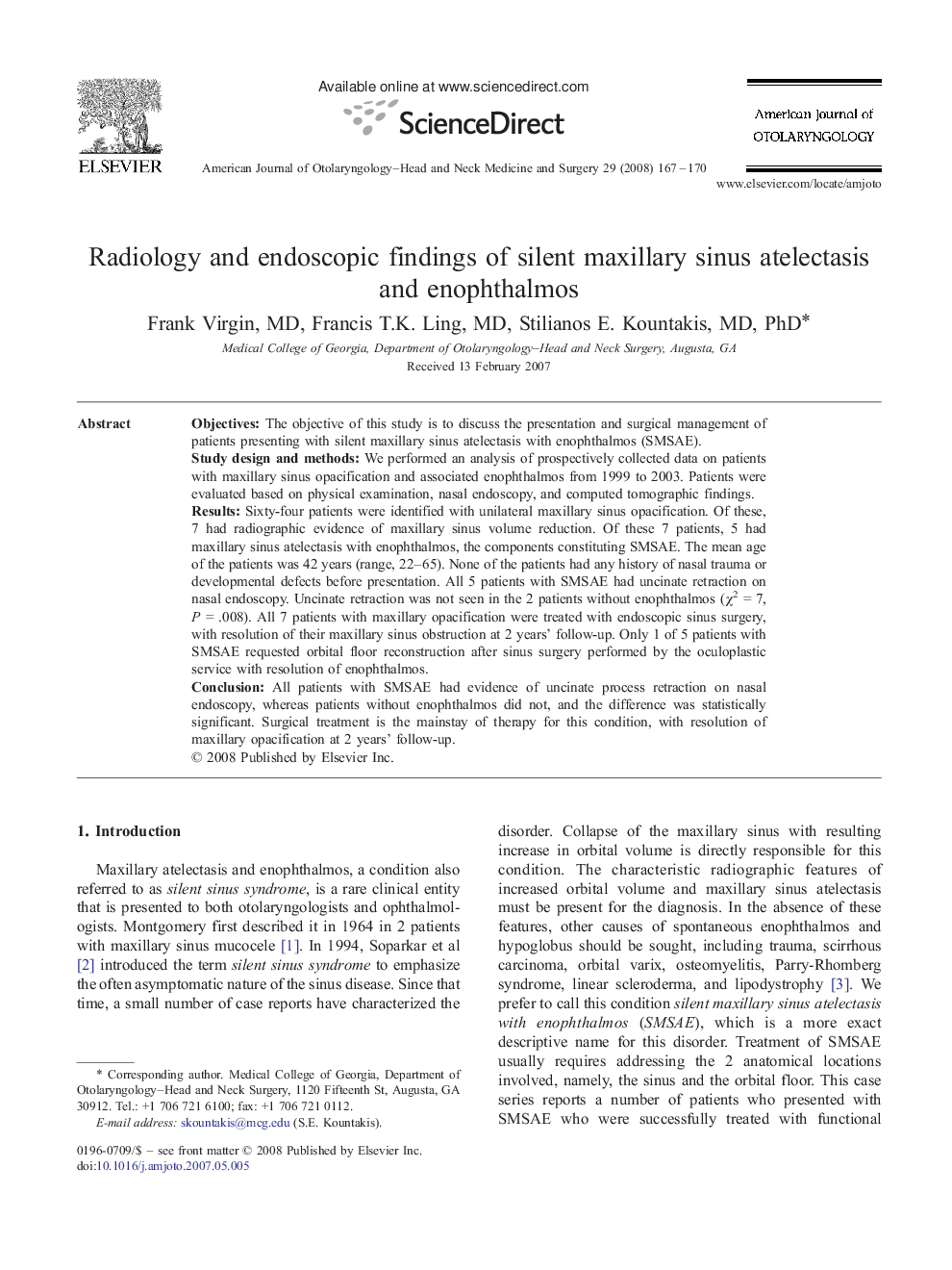| Article ID | Journal | Published Year | Pages | File Type |
|---|---|---|---|---|
| 4104406 | American Journal of Otolaryngology | 2008 | 4 Pages |
ObjectivesThe objective of this study is to discuss the presentation and surgical management of patients presenting with silent maxillary sinus atelectasis with enophthalmos (SMSAE).Study design and methodsWe performed an analysis of prospectively collected data on patients with maxillary sinus opacification and associated enophthalmos from 1999 to 2003. Patients were evaluated based on physical examination, nasal endoscopy, and computed tomographic findings.ResultsSixty-four patients were identified with unilateral maxillary sinus opacification. Of these, 7had radiographic evidence of maxillary sinus volume reduction. Of these 7 patients, 5 had maxillary sinus atelectasis with enophthalmos, the components constituting SMSAE. The mean age of the patients was 42 years (range, 22–65). None of the patients had any history of nasal trauma or developmental defects before presentation. All 5 patients with SMSAE had uncinate retraction on nasal endoscopy. Uncinate retraction was not seen in the 2 patients without enophthalmos (χ2 = 7, P= .008). All 7 patients with maxillary opacification were treated with endoscopic sinus surgery, with resolution of their maxillary sinus obstruction at 2 years' follow-up. Only 1 of 5 patients with SMSAE requested orbital floor reconstruction after sinus surgery performed by the oculoplastic service with resolution of enophthalmos.ConclusionAll patients with SMSAE had evidence of uncinate process retraction on nasal endoscopy, whereas patients without enophthalmos did not, and the difference was statistically significant. Surgical treatment is the mainstay of therapy for this condition, with resolution of maxillary opacification at 2 years' follow-up.
